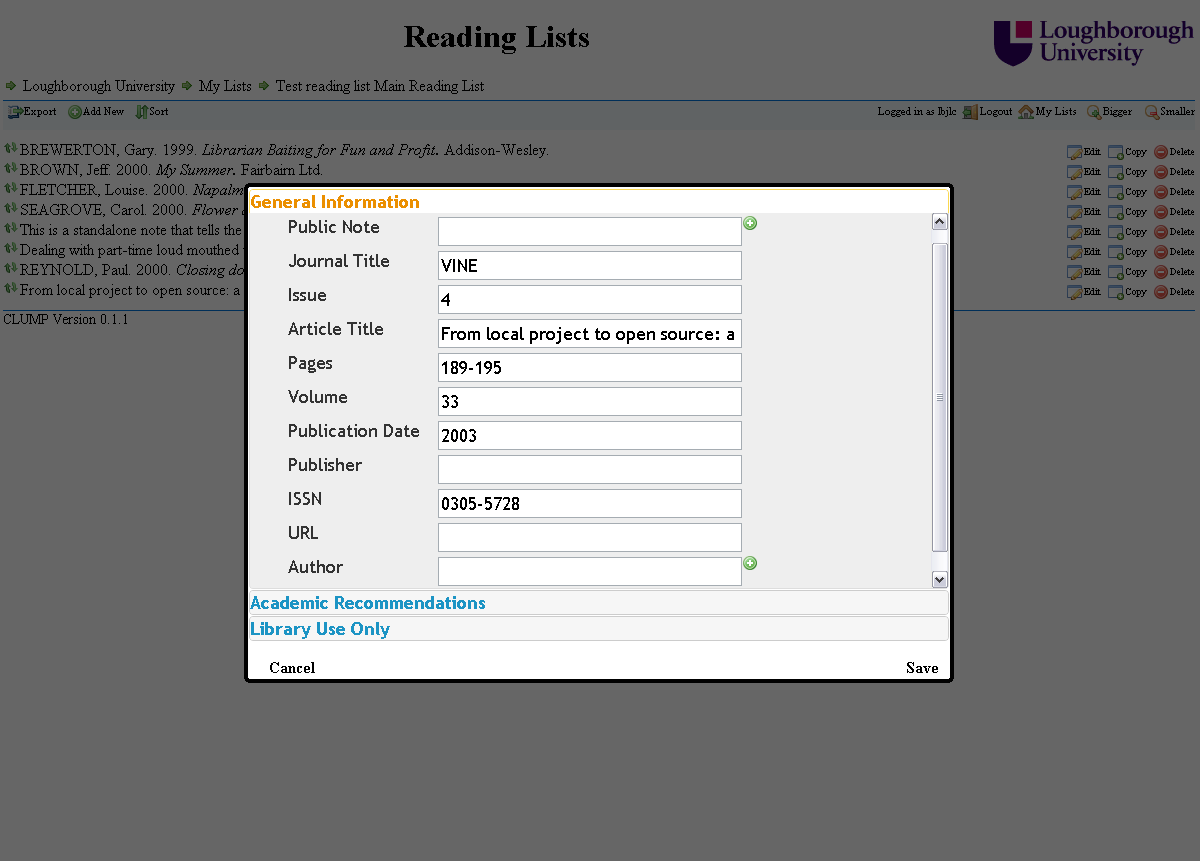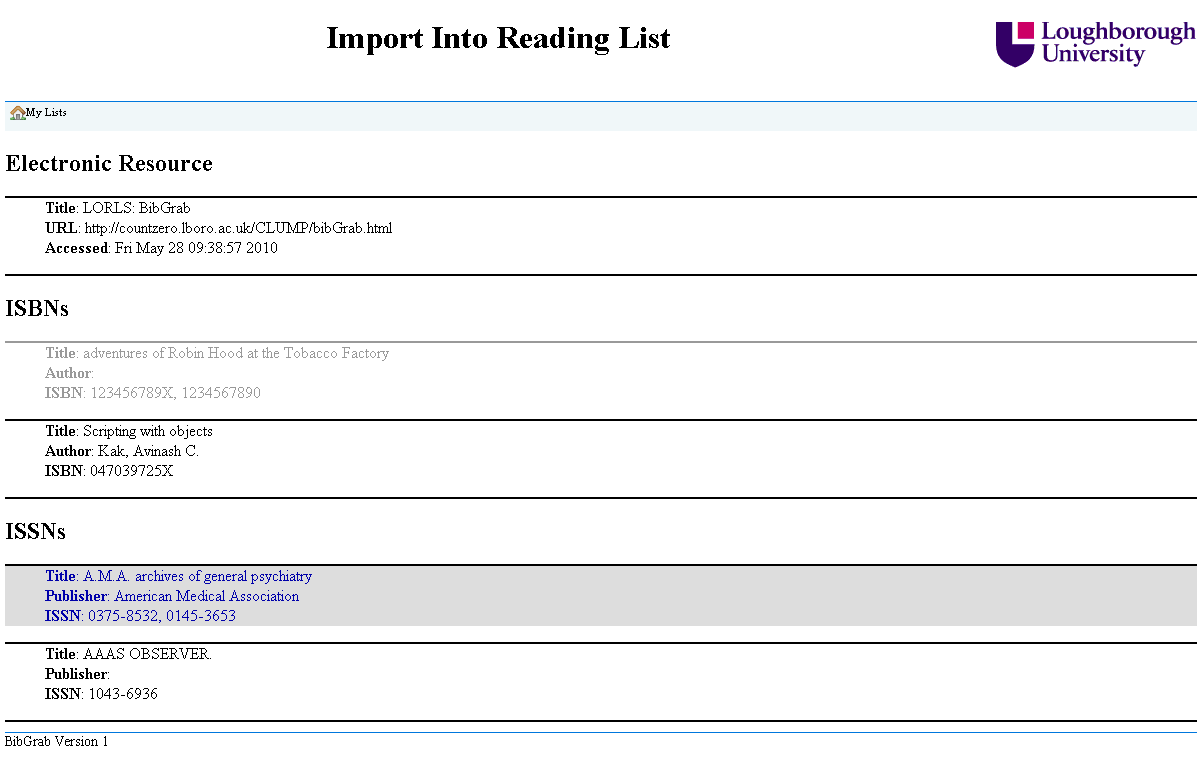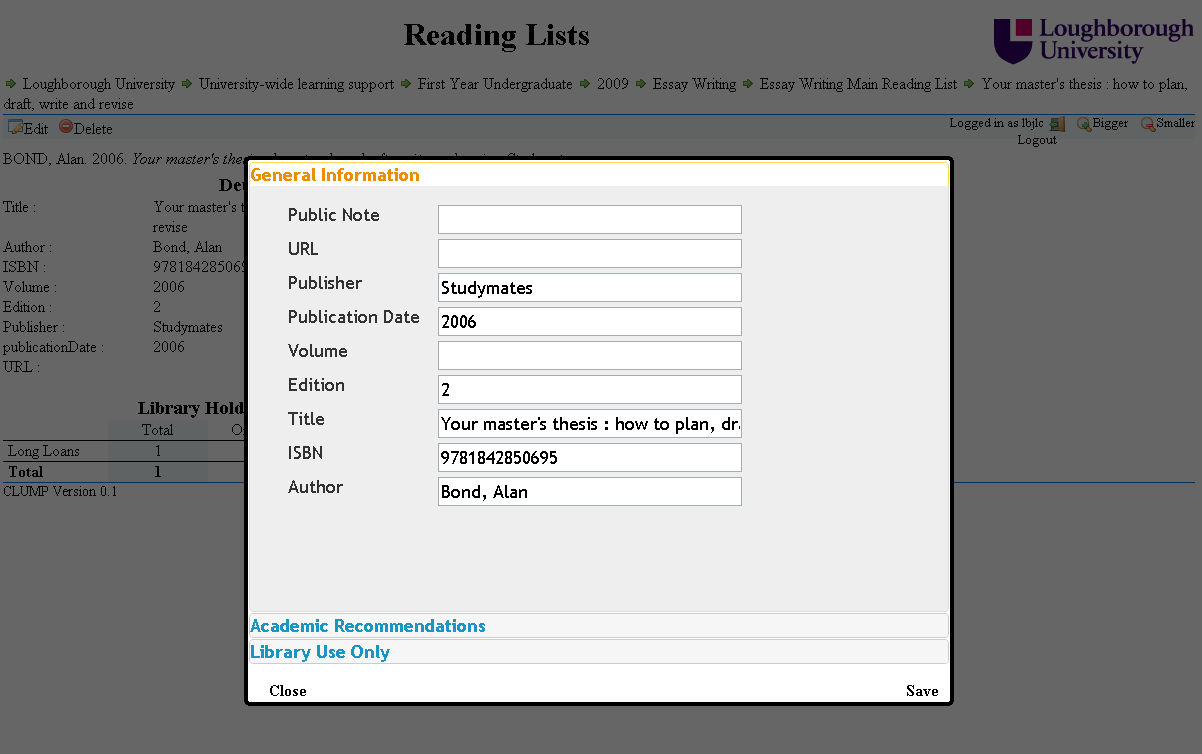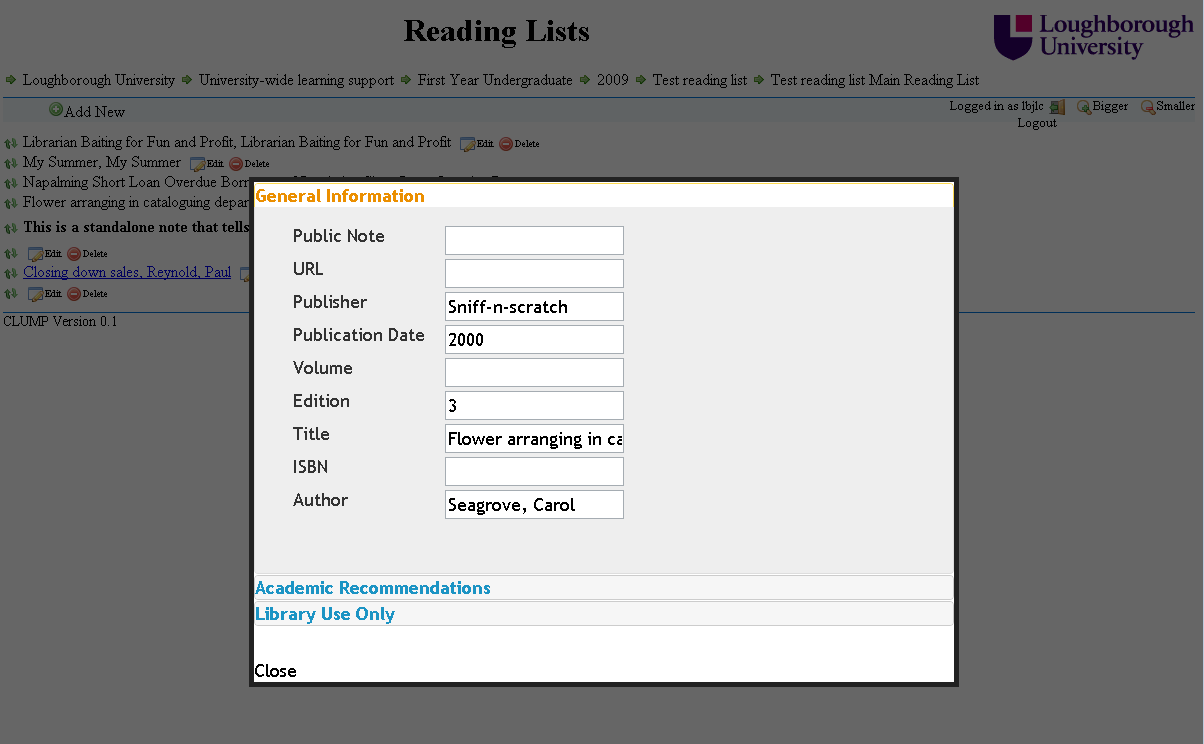Posts tagged Editing
‘Copy To’ Added to CLUMP
I have now added the ‘Copy To’ functionality to CLUMP. It presents a list of the owners reading lists to them with checkboxes and they can select which ones they want to copy the item to. Once they have chosen the lists to copy the item to they click ‘copy’ and it calls LUMP’s CopySU API to copy the structural unit to each reading list selected.
Because the CopySU API can take a while to run at the minute I use the asynchronous aspect of JavaScript to make all the CopySU calls without waiting for the previous one to complete. This lead to the problem of “how do I wait till all the calls have completed?”. There is no “wait till all my callbacks have run” option in JavaScript so I ended up having to increment a counter for each call and then have the callback function decrement the counter. If the counter reaches 0 then the callback function runs the code that we need to run after all of the CopySU API calls have completed (In this case close the popups and reload the current structural unit if it was one of the targets).
BibGrab
For a long time we have been told that staff want an easy way to add an item to a reading list. To make item entry easier the data entry forms for LORLS v6 are specific to the type of item being added. This should help avoid confusion when people are asked for irrelevant metadata (e.g. asking for an ISBN for a web page).
Recently I have been working on BibGrab our tool to allow staff to add items to their reading list from any web page that has an ISBN or ISSN on it. BibGrab consists of two parts. The first part is a piece of JavaScript that is add as bookmark to their browser, then when they select that bookmark in future the JavaScript is run with access to the current page. The second part is a CGI script that sits along side CLUMP that processes the information and presents the options to the users.
The bookmark JavaScript code first decides what the user is wanting it to work with. If the user has selected some text on the page then it works with that otherwise it will use the whole page, this helps if there are lot of ISBNs/ISSNs on the page and the user is only interested in one of them.
It then prepends to that the current pages URL and title, which lets BibGrab offer the option of adding the web page to a reading list as well as any ISBNs/ISSNs found. This information is then used to populate a form that it appends to the current page. The form’s target is set to ‘_blank’ to open a new window and the action of the form is set to the CGI script. Finally the JavaScript submits the form.
The CGI script takes the input from the form and then searches out the web page details the JavaScript added and any possible ISBNs and ISSNs. The ISBNs and ISSNs then have their checkdigit validated and any that fail are rejected. The remaining details are then used to put together a web page, that uses JavaScript to lookup the details for each ISBN and ISSN and display these to the user. The web page requires the user to be logged in, as it is using CLUMP’s JavaScript functions for a lot of the work it can see if they have already logged into CLUMP that session and if they haven’t it can then ask them to login.
Once logged in they can see all the items that BibGrab found.
When they select an item they are then presented with all the details for that item and if it is a journal they are also presented with some boxes for adding in details to specify a specific article, issue or volume. They are also presented with a list of their reading lists, of which they can select as many as they like and when they click add the item is added to all their selected reading lists. The item is added to the end of each reading lists and is in a draft mode. This makes it easier for people to add items to their reading lists when they find them without worrying how it will affect their list’s layout.
After the item has been added to their chosen reading lists it is grayed out as a visual indication that it has already been used. They can still select it again and add it to even more reading lists if they want or they can select another item to add to their reading lists.
Editing Via CLUMP
CLUMP has been progressing nicely this past month and we have now got it displaying items ready for editing. For this it first required the ability to login users, as the guest user hasn’t been given permissions to edit anything. Once logged in the user is then presented with the options to edit/delete items that they have permissions to edit.
Another new feature is the ability to reorder lists using drag and drop. The reorder APIs aren’t implemented yet in LUMP though but once they are the code is all in place in CLUMP and so should be quite easy to implement.





